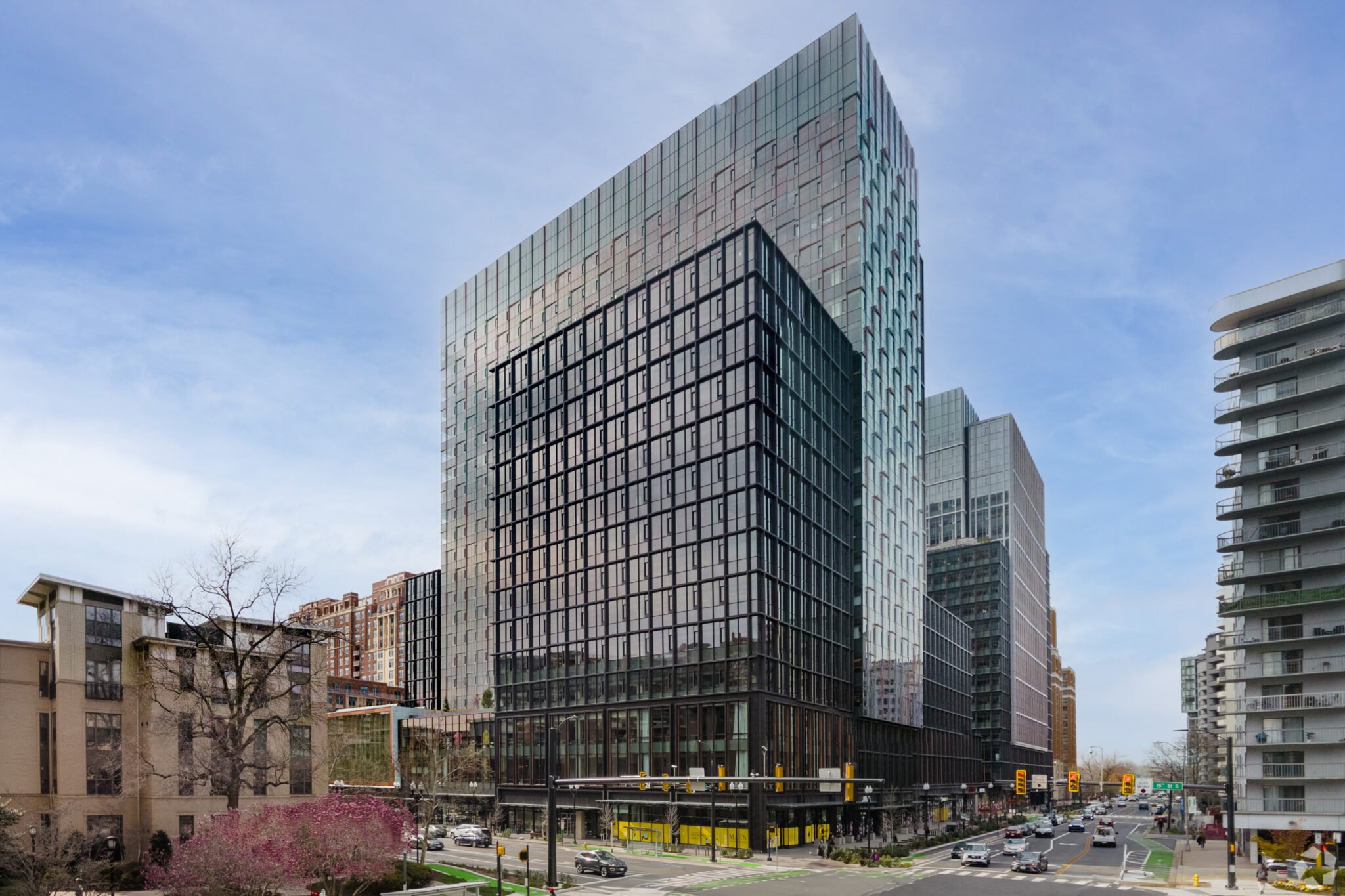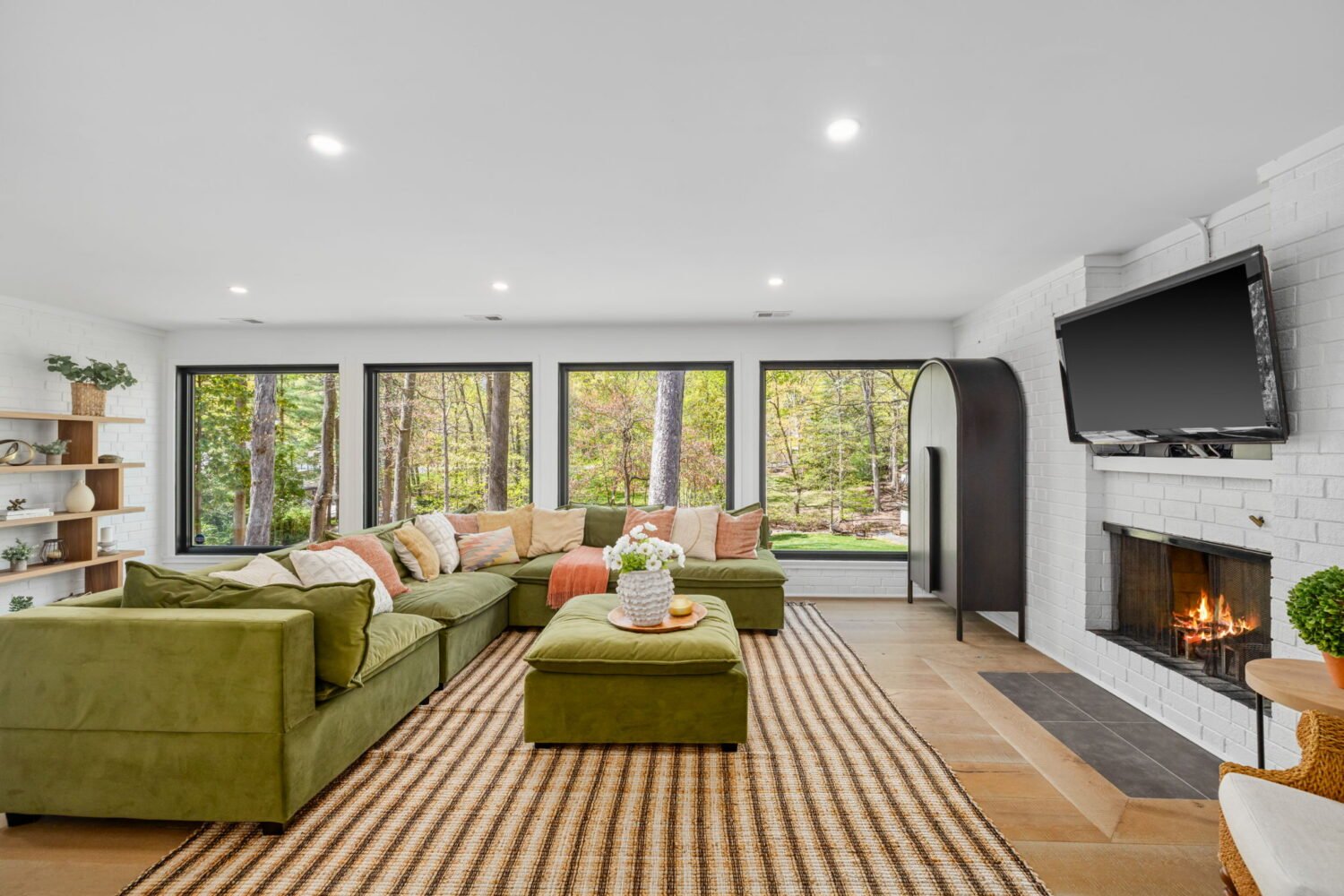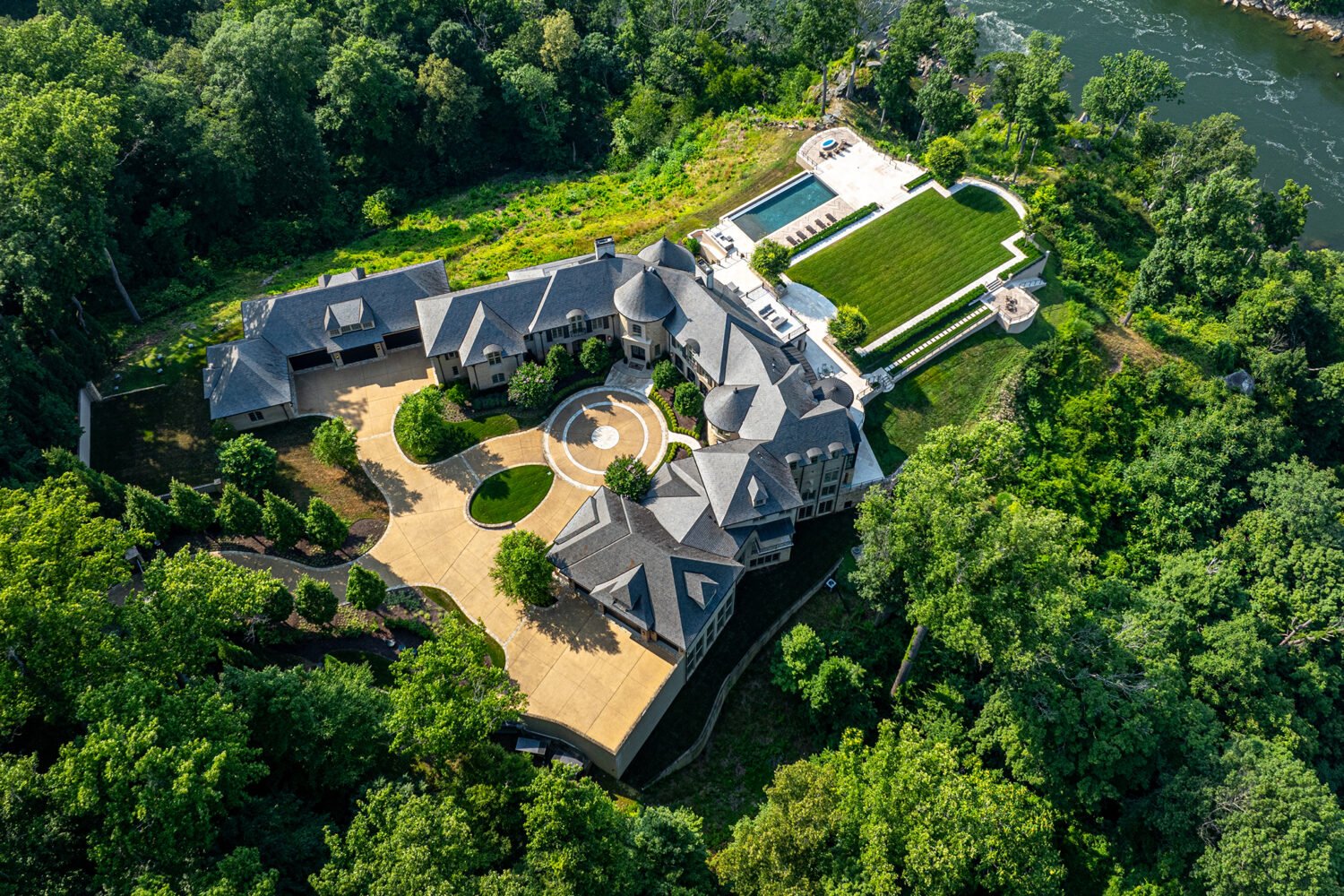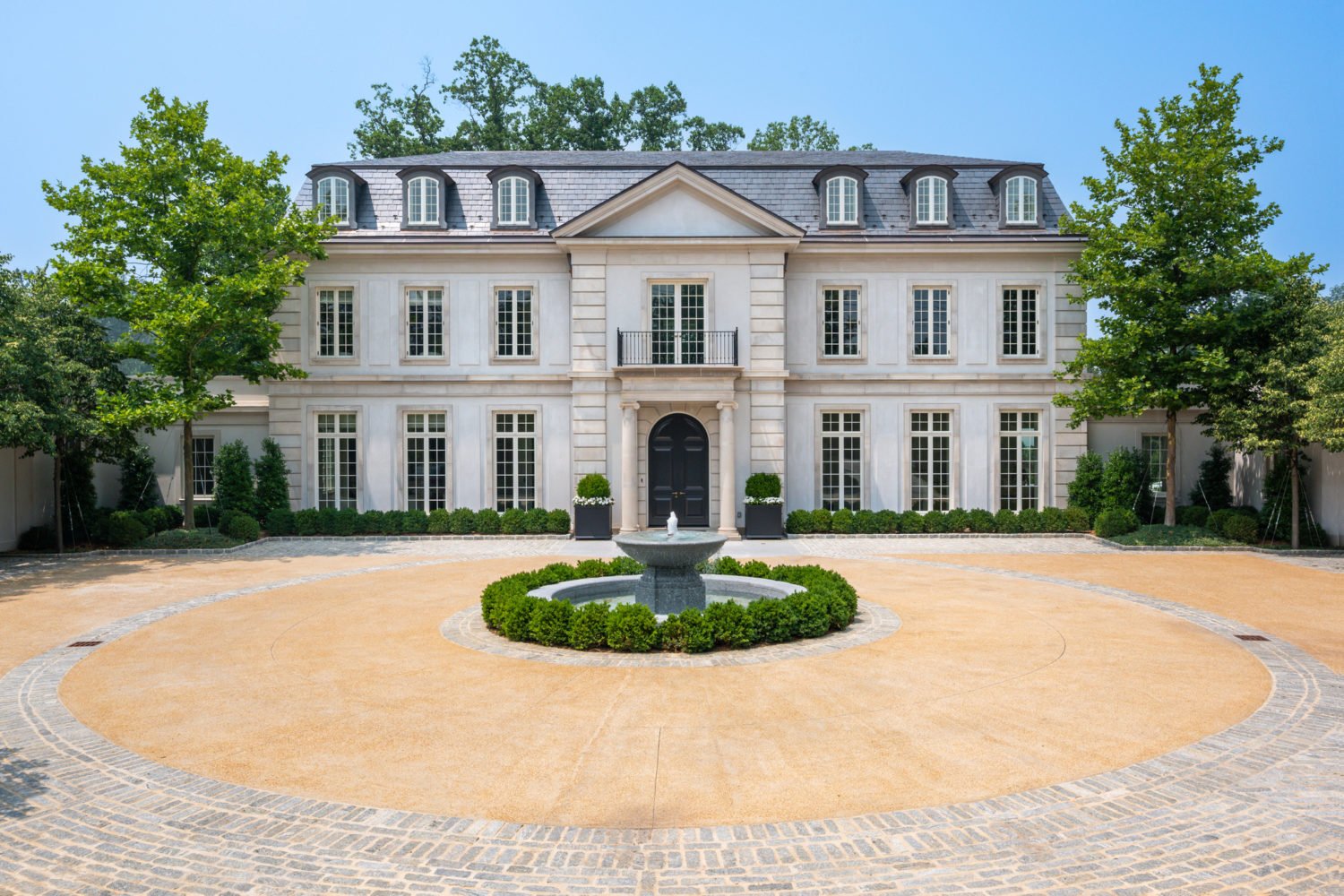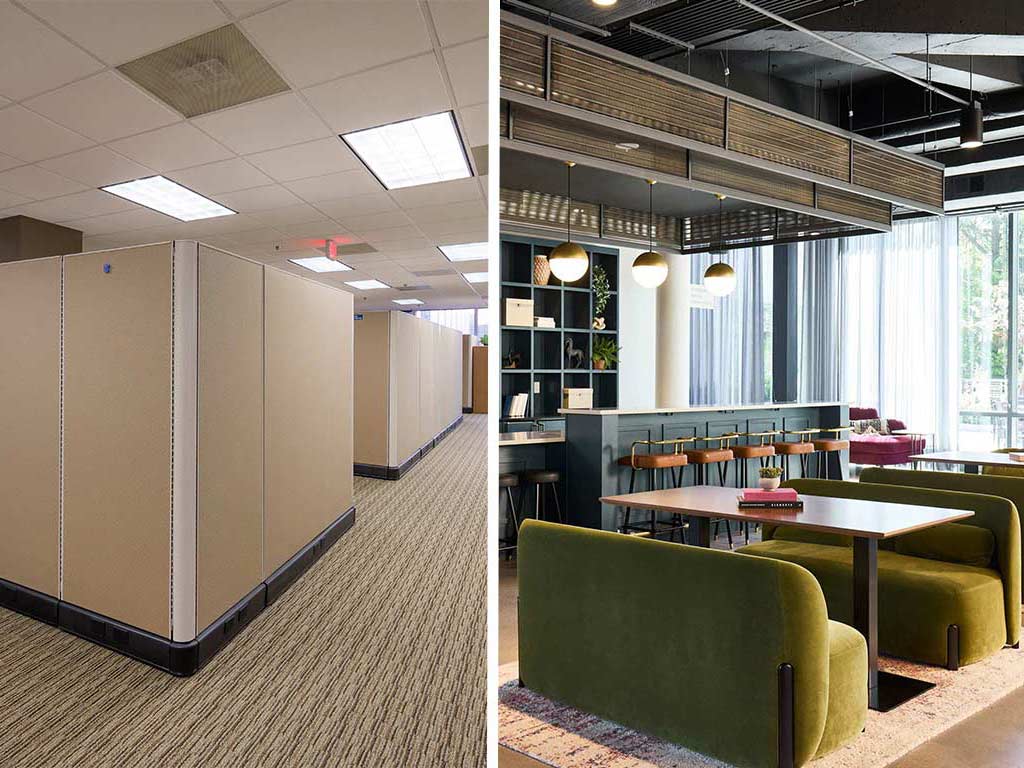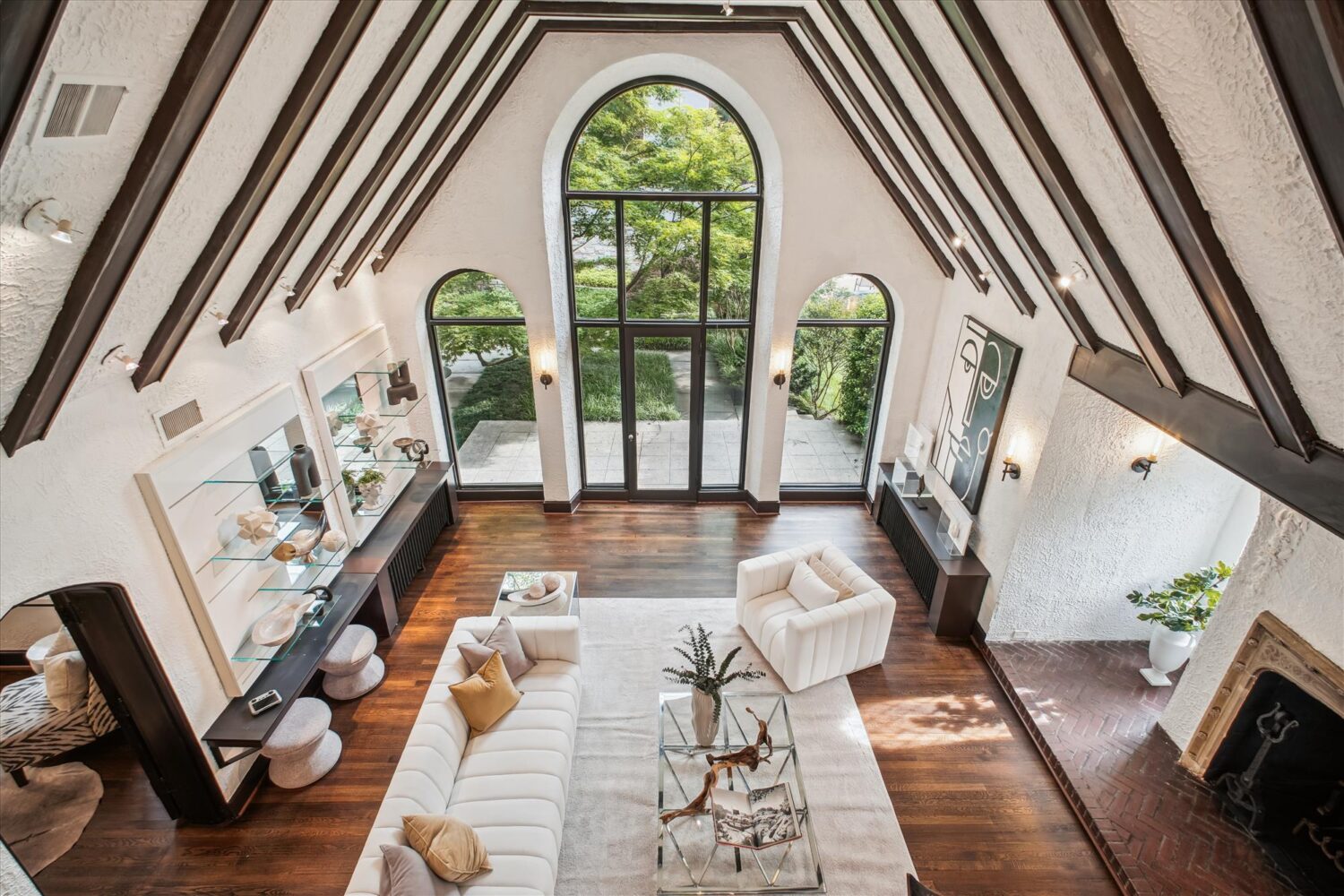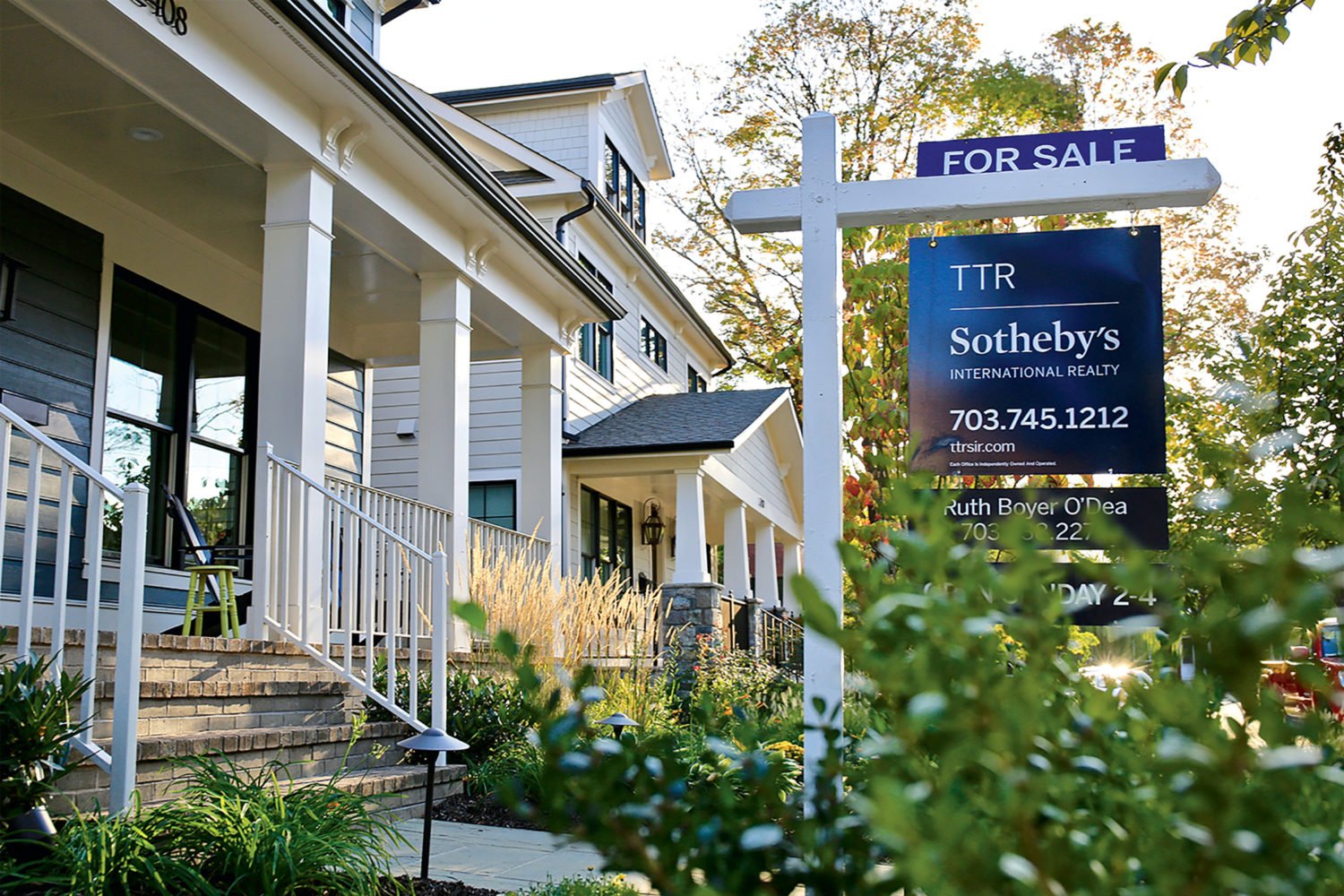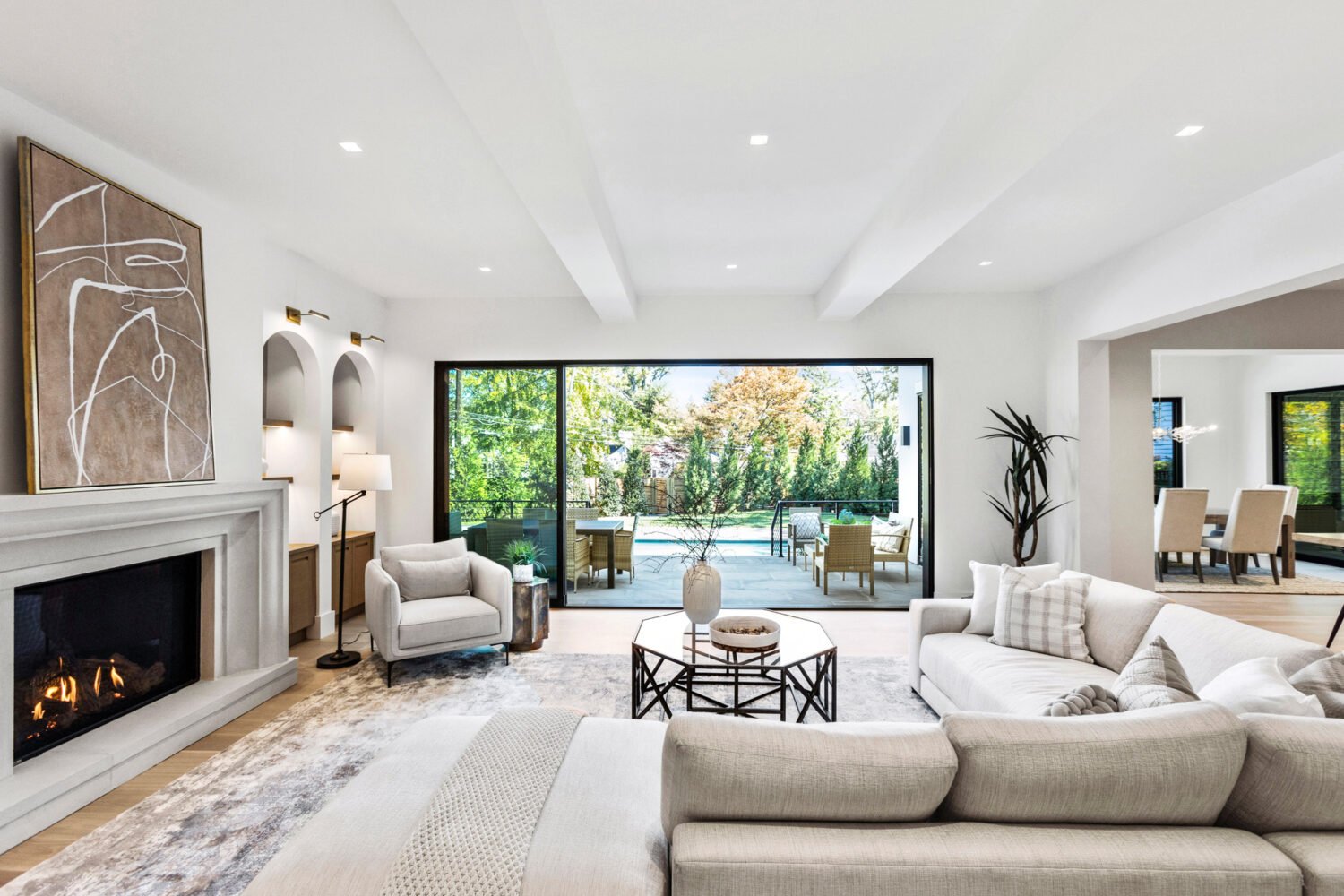It’s no secret that for more than four years, many offices have sat collecting dust. In the DC area, the share of workers commuting to offices is less than 50 percent of pre-pandemic levels, according to reports from Kastle Systems, which tracks weekly office visits.
Yet there are two bright spots in the region’s office market: buildings built after 2020 and historic buildings that date from before 1950. Those are the only types that have seen more tenants leasing space than leaving in the past year, says Melina Duggal, a senior director of market analytics for Washington, DC, at CoStar, a commercial real-estate data-analytics firm.
The reasons are simple, says Duggal. As leases expire, many companies are downsizing and taking a “flight to quality,” she says, opting for space in a newer building with the latest bells and whistles. In this area, quality also refers to older historic buildings, which can have a lot of charm.
That’s just one trend in the commercial real-estate market here.
The biggest buzz, of course, is about office-to-residential conversions. Although held out as one way to revitalize downtown—and solve a housing shortage—converting office space presents lots of challenges. Even so, the District has the largest number of conversions in progress (5,820 units) among major cities, according to a 2024 report by RentCafe.
“Areas where we anticipate interest to be highest are in those submarkets with the highest vacancy rates, such as the central business district and the East End in DC,” Duggal says. Here, too, historic structures hold appeal. “Conversions are also more likely in areas with historic buildings with smaller footprints, making conversions easier, such as Alexandria, Leesburg, and Frederick.”
The lack of sites to build on and the high cost of new construction mean that our region will likely see more office-to-residential conversions in the next few years, says Kelly Mangold, a principal with RCLCO, a real-estate consulting firm. Incentives such as 20-year tax abatements, relaxed zoning regulations, and an accelerated pace of permit review make conversions easier.
This isn’t to say the regional office market isn’t still struggling. “By many metrics that CoStar tracks, the DC area has some of the worst numbers nationally, and no significant changes appear to be on the horizon that would change the current trajectory,” Duggal says.
She and Mangold do see positive trends. First, mixed-use neighborhoods where people can live, work, and play—such as National Landing, the Wharf, and Logan Circle—are faring better, says Mangold.
And whether it’s the fancy pools or just demographics, the area’s apartment market is hot. “The Washington, DC, multifamily market outperforms the nation on multiple metrics,” Duggal says. “It’s one of the country’s top markets for annual rent growth, and supply has been in line with demand. Population growth has provided a tailwind for apartment demand in the Washington area throughout 2024.”
Given the slow pace of construction starts in the region and the increased demand, especially in Northern Virginia, Matt Ginivan, senior vice president of real-estate development at JBG Smith, expects this strong performance to continue.
Successful Formula

With its glass facade and angled balconies near the Southwest DC waterfront, the Westerly apartment building is more than just a pretty face. It’s an example of how creative financing can be used to incorporate affordable housing into a luxury building.
Rather than rely on traditional sources of funding for affordable housing—such as the DC government’s Housing Production Trust Fund—Hoffman & Associates, which developed the Westerly, financed the apartment building through a joint venture with the international investment and development firm Grosvenor and two federal low-income housing tax credits, along with three construction loans.
“We successfully implemented a complicated structure that not only secured the necessary funding but also allowed us to address the need for affordable housing in the community,” says Jon McAvoy, chief investment officer at Hoffman & Associates.
That approach led to the building being named CoStar’s Multifamily Development of the Year for DC.
The Westerly—a joint venture of Hoffman & Associates, Affordable Homes & Communities (AHC), and real-estate developers CityPartners and Paramount—is less than a block from the Waterfront Metro station and three blocks from the Wharf. Some 30 percent of its 449 apartments are affordable housing—with half of those units for households at or below 30 percent of the area’s median income ($45,630 for a household of four) and half for those making 50 percent ($76,050) of median income. On every floor, the affordable apartments, which rent for $768 to $1,669 a month, are side by side with the market-rate units ($1,886 to $4,930).
Hoffman & Associates made space on the ground floor for AppleTree Public Charter School, with a cultural-event area that’s available to the surrounding community as well, says Paul Bernard, president and CEO of AHC. Also on the retail level is a branch of the veterinary practice GoodVets plus the family-owned Good Company Doughnut Cafe.
Says McAvoy: “By fostering affordable housing and attracting locally owned businesses, cultural spaces, and early-childhood-education facilities, we have created a vibrant and inclusive community.”
Talk of the Town
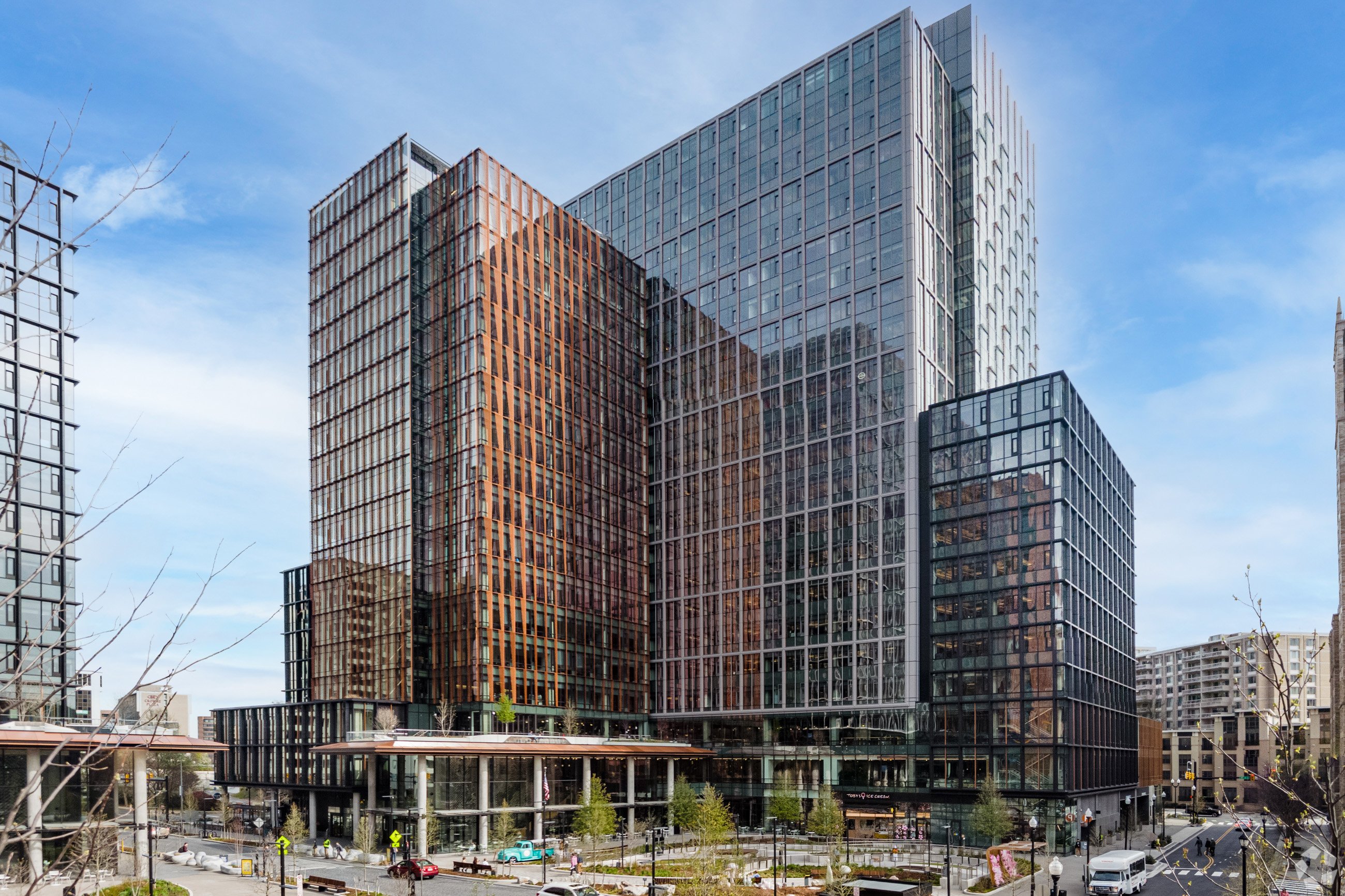
Ever since Amazon announced in 2018 that the DC area would be home to its second headquarters, there’s been much speculation about the company’s impact on the region as well as the area now known as National Landing. And while Washington hasn’t been flooded with new employees, as was imagined pre-Covid, phase one of Amazon’s HQ2 has still created some buzz. It also impressed the judges of CoStar’s Impact Awards, which named it DC’s Commercial Development of the Year.
Known as Metropolitan Park, the two 22-story office towers flank a new public park and include restaurants and retail. Judges commended Amazon and developer JBG Smith not only for transforming the space for residents and employees but also for their dedication to sustainability. Met Park, powered entirely by renewable energy, was built with low-carbon concrete, engineered wood, electrified energy-efficient operations, water-reuse systems, and two acres of landscaped roofs with native plants. It’s estimated that the complex will use 24 percent less energy than a comparable new office building.
JBG Smith and Amazon also installed non-reflective glazing to deter bird strikes. They took care of people, too: Among the dozen-plus retailers at Met Park are options including doughnuts, pizza, and health foods. There are also fitness centers, a cycle shop, and a contemporary-art space. Says Matt Ginivan, a senior vice president of real-estate development at JBG Smith: “Through the collaborative input of the local community, Arlington County, and other stakeholders, Amazon expanded and transformed the park into an integral part of the neighborhood for residents, workers, and visitors to enjoy.”
Drab Offices, Transformed

When it comes to office conversions, 20 Massachusetts Avenue, Northwest, a former government office building owned by Office Properties Income Trust, is ahead of its time.
The 1970s-era, seven-floor structure has been transformed by the architects at Leo A. Daly into a ten-story mixed-use development with a Royal Sonesta hotel, retail, and offices. Yet it wasn’t Covid that prompted the renovation.
“The conversion was planned more than two years prior to 2020,” says Irena Savakova, a vice president at Leo A. Daly. “When the pandemic hit, the team was at the midpoint of design development and going through agency approval processes.”
The project has been named CoStar’s Redevelopment of the Year for DC, praised for its design as well as its environmentally friendly renovation.
Repurposing the building rather than making all-new construction materials saved what amounts to a year’s worth of carbon emissions from nearly 1,500 cars. Other sustainable features include energy-efficient high-performance lighting and a green roof to capture rainwater. The building is projected to use 66 percent less energy than comparable structures, according to Savakova.
The $200 million overhaul of drab offices into more inviting spaces included replacing part of the brick facade with a curtain of glass and cutting a ten-story atrium into the center of the building to bring in light.
Says Savakova: “This shows how a successful place-making approach can transform neglected urban zones in the national capital—or any city.”
While the new building still includes office space—some 183,000 square feet of it—Savakova says the redesign incorporated retail and a hotel to make the economics work.
The architects also wanted flexible indoor and outdoor spaces to draw in people. “Wellness” hubs with natural light, plants, art, and areas to sit and relax or work were added on various floors. There are outdoor areas with greenery, as well as a penthouse whose walls open to the outdoors. The space can be configured for a reception, a meeting, or another use. “You can sit outside and enjoy nature,” Savakova says, “or walk inside and see an art space.”
Career Achievement Awards
Few industries have been hit as hard by Covid as commercial real estate. And yet, despite the hollowing-out of so many area office buildings, deals are still being done—leases signed, buildings rising, others redeveloped.
For years, the real-estate analytics provider CoStar has handed out its Power Broker Awards for the best in commercial real estate. Washingtonian has again teamed up with CoStar, this time to salute multi-year winners of its Power Broker Awards.
To earn a Career Achievement Award and a spot on this Washingtonian list, a broker or firm must have won a Power Broker Award in at least three of the past six years—no easy feat, given all the market challenges.
The firms and individuals here have helped shape our region.
Individual Brokers
Matthew Alexander
Dochter & Alexander Retail Advisors
Evan Behr
JLL
Peter Burleigh
NAI Michael
Bradley Buslik
H&R Retail
Dallon Cheney
KLNB
Stephen Cloud
Stream Realty Partners
Dan Coats
JLL
Walter Coker
Berkadia Posthumous; Coker passed away in March 2024.
Paul Collins
Cushman & Wakefield
Brian Crivella
Berkadia Commercial Mortgage
Bryan Davis
H&R Retail
Caulley Deringer
Stream Realty Partners
John Dettleff
JLL
David Dochter
Dochter & Alexander Retail Advisors
Collins Ege
Eastdil Secured
Christine Espenshade
Newmark
Joseph Farina
Divaris Real Estate
Robert Garrish
Newmark
Dimitri Georgelakos
KLNB
Bob Gibbs
CBRE
Constantine Gogos
Papadopoulos Properties
Chad Habeeb
FD Stonewater
Andrew Hassett
Stream Realty Partners
Robert Jenkins
JLL
Jon Lawrence
Cushman & Wakefield
David Lipson
Savills
Pete McCabe
The Pruitt Corporation
Timothy McDonald
Eastdil Secured
Brian Mitchell
H&R Retail
David Nachison
Eastdil Secured
Virgil Nelson
Cushman & Wakefield | Thalhimer
Daniela Patino
CBRE
Tony Russo
CBRE
Ray Schupp
H&R Retail
Lance Schwarz
NAI Michael
Matt Skalet
KLNB
Miles Spencer
Newmark
Shary Thur-Pecaro
Thur & Associates
Abbot Wallenborn
JLL
David Ward
H&R Retail
Drew White
Berkadia Commercial Mortgage
Chris Wilkinson
Willard Retail
Winning Firms
Avison Young
Berkadia Commercial Mortgage
CBRE
Colliers
Cushman & Wakefield
Eastdil Secured
FD Stonewater
Greysteel
H&R Retail
JBG Smith Properties
JLL
KLNB
Lincoln Property Company
Marcus & Millichap
Melnick Real Estate Advisors
NAI Michael
Newmark
Savills
SRS Real Estate Partners
Tishman Speyer
Transwestern Real Estate Services
Walker & Dunlop
This article appears in the September 2024 issue of Washingtonian.

